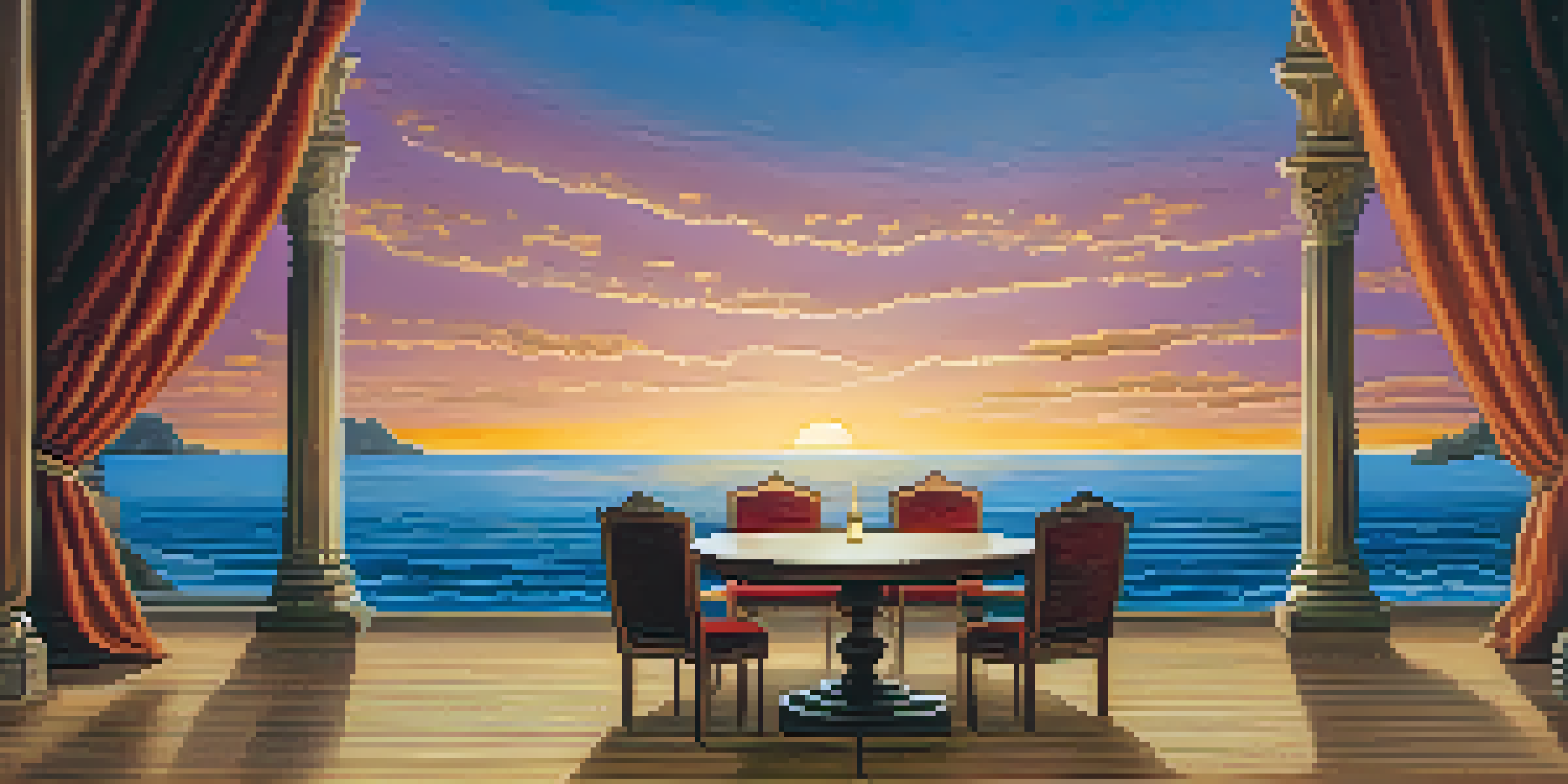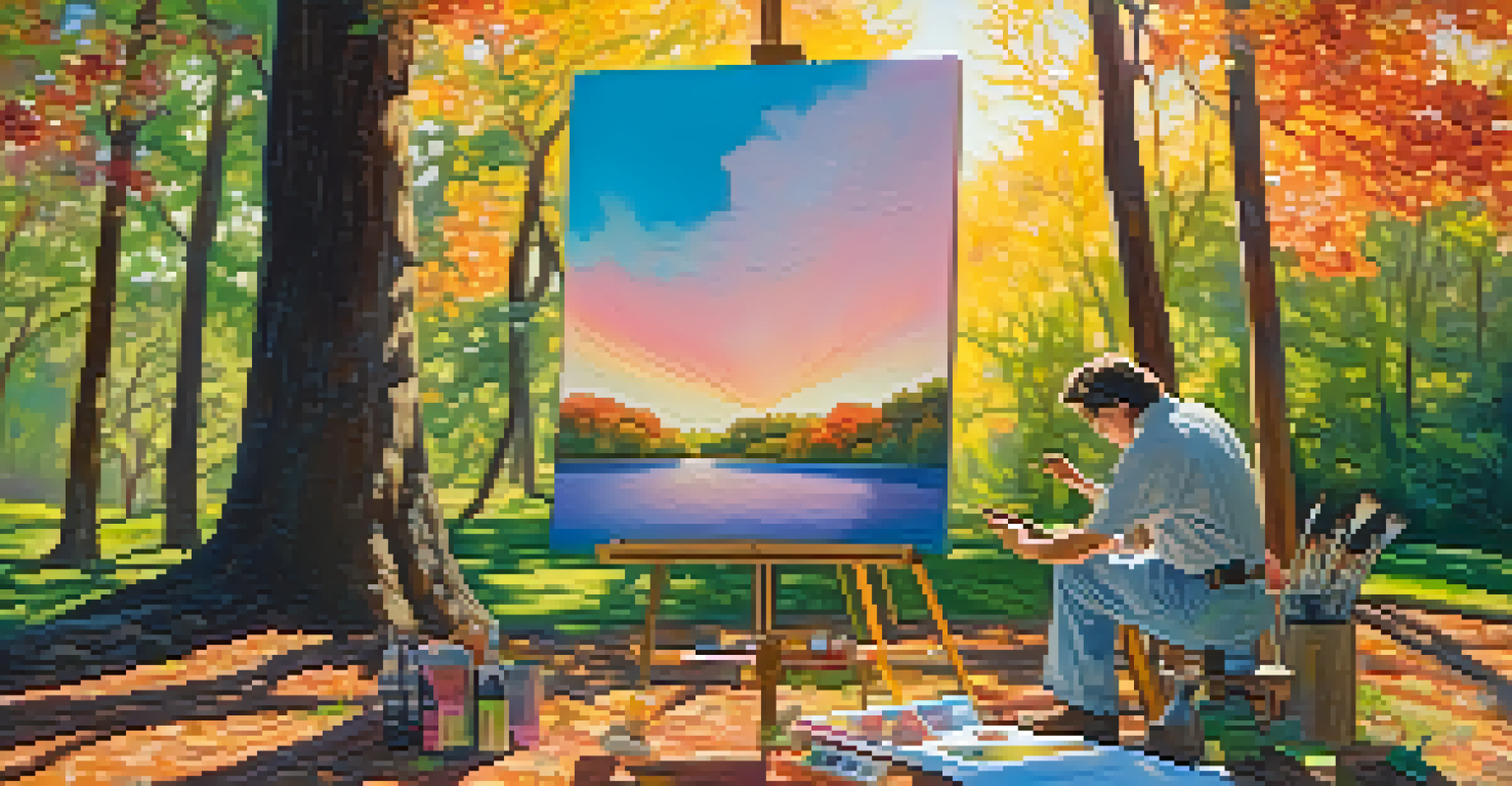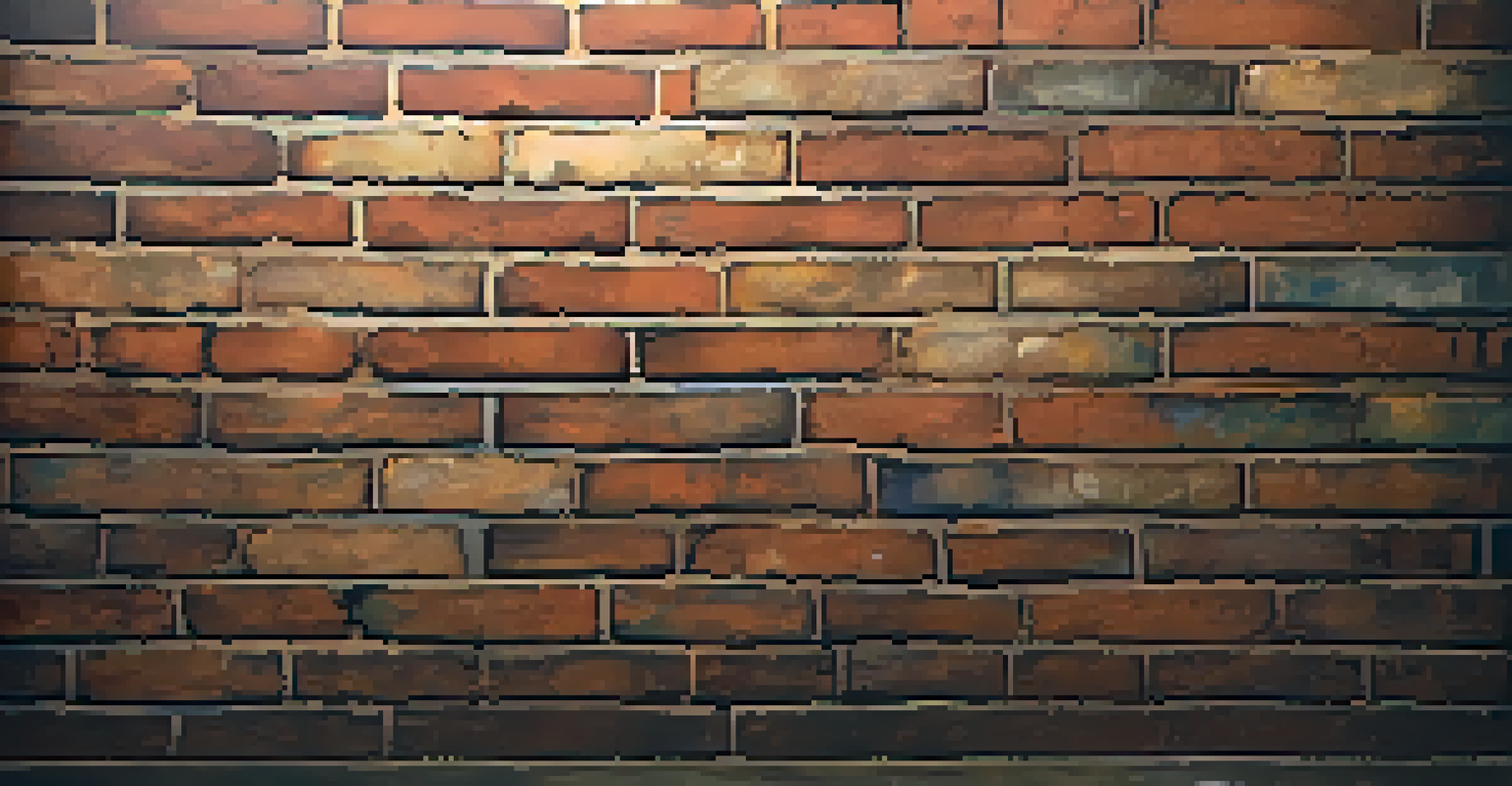From Canvas to Stage: Painting's Role in Theatrical Design

The Intersection of Painting and Theatrical Design
The world of theater is a vibrant tapestry woven from various art forms, and painting plays a crucial role in this creative blend. When we think of a theatrical production, we often picture the actors and the script, but the visual elements are equally important. The backdrop, set pieces, and even props are often designed with the brushstrokes of a painter in mind, creating an immersive environment that transports audiences.
The theater is a great mystery, a great magic, and a great miracle. It is a world in itself, a world of beauty and illusion.
Painting in theatrical design is not just about aesthetics; it’s about storytelling. A well-painted backdrop can set the mood of a scene, evoke emotions, and provide context. For example, a dark, stormy sky can create tension, while a bright, sunny landscape can evoke feelings of joy and hope.
Moreover, theatrical painting often incorporates techniques from different artistic movements, allowing designers to draw inspiration from impressionism, surrealism, and more. This fusion of styles not only enhances the visual appeal but also deepens the narrative layers of a production.
Set Design: The Canvas of Theatrical Storytelling
Set design is akin to painting on a massive canvas, where every element contributes to the overall story being told. Designers meticulously plan each detail, from the colors to the textures, to create an atmosphere that aligns with the script. This thoughtful approach ensures that the visual elements resonate with the audience, reinforcing the emotional arc of the narrative.

For instance, a dilapidated room might be painted in muted tones with peeling wallpaper to suggest neglect and despair, effectively reflecting the characters' struggles. This kind of visual storytelling helps the audience connect with the characters on a deeper level, making the experience more impactful.
Painting Enhances Theatrical Storytelling
Painting in theater is essential for creating immersive environments that evoke emotions and deepen narratives.
Additionally, the integration of 3D painted elements, such as faux windows or door frames, adds depth and realism to the set. This technique blurs the lines between reality and imagination, drawing viewers further into the world of the play.
Color Theory: The Emotional Palette of Performance
Color theory is a fundamental aspect of both painting and theatrical design, influencing how audiences perceive emotions and actions. Every color evokes specific feelings; for instance, red can signify passion or anger, while blue might evoke calmness or sadness. Understanding these associations allows designers to choose colors that enhance the narrative.
Art is not a thing; it is a way. The essence of art is the process of making things, of transforming the world.
In a dramatic scene, a splash of intense color can amplify tension, while softer hues might be used in more tender moments. This strategic use of color helps to guide the audience’s emotional response, making the performance more engaging and memorable.
Moreover, lighting plays an essential role in how colors are perceived on stage. The interplay between painted sets and lighting can transform a scene, creating varying moods and atmospheres that align perfectly with the unfolding story.
The Role of Texture in Scenic Design
Texture is another vital component that painting brings to theatrical design, adding a tactile quality that engages the audience's senses. The feel of a surface can enhance the realism of a set, making it more relatable and believable. For instance, a rough-hewn wooden table might suggest rustic charm, while a sleek, shiny surface could convey modernity and sophistication.
By incorporating various textures through paint, designers can evoke specific feelings and enhance the storytelling. A gritty, textured wall might symbolize decay or hardship, contrasting with smoother, more polished elements that represent hope or aspiration.
Collaboration Fuels Creative Design
The collective efforts of painters, set designers, and actors are crucial in unifying visual elements and enhancing performances.
This attention to texture not only enriches the visual experience but also invites the audience to feel the weight of the narrative. It creates a multi-dimensional experience that transcends the mere act of watching a performance.
Historical Influences: A Journey Through Time
Throughout history, theatrical design has been influenced by various artistic movements and cultural trends, reflecting the society of the times. From the grandeur of Baroque theaters adorned with elaborate paintings to the minimalist styles of modern productions, the evolution of design is a fascinating journey. Each era has left its mark, shaping how stories are visually presented on stage.
For instance, the use of realism in the 19th century brought a focus on accurate depictions of life, which was often achieved through detailed paintings and scenery. This shift not only changed the aesthetic but also how audiences engaged with the performances, making them feel like they were part of the story.
Understanding these historical influences allows contemporary designers to draw inspiration from the past while also forging new paths in theatrical design. This blend of old and new creates a dynamic landscape that continually captivates audiences.
Collaboration: The Heart of Theatrical Design
The magic of theatrical design lies in collaboration, where painters, set designers, directors, and actors unite to create a cohesive vision. Each member brings their unique skills and perspectives, enriching the final product. This collaborative spirit fosters creativity, pushing boundaries and resulting in innovative designs that captivate audiences.
For instance, a painter might work closely with a set designer to ensure that the colors and textures align with the director's vision, creating a seamless experience. This teamwork is essential, as it helps to unify the production, ensuring that every visual element complements the performance.
Future Blends Traditional and Digital Art
The integration of traditional painting techniques with digital innovations offers exciting new possibilities for theatrical design.
Moreover, this collaboration extends beyond the design team. Actors also provide valuable feedback, helping to shape the visual elements in a way that enhances their performances. This interconnectedness is what truly brings a theatrical production to life.
The Future of Painting in Theatrical Design
As technology continues to evolve, so too does the role of painting in theatrical design. Digital painting and projection mapping are becoming increasingly popular, allowing designers to create stunning visuals that can be altered in real-time. This innovation opens up new avenues for storytelling, enabling productions to adapt and change dynamically during performances.
However, traditional painting techniques still hold a significant place in theater, offering a tangible, tactile quality that digital methods can’t replicate. The blend of both approaches allows for a rich diversity in design, catering to different styles and themes.

Ultimately, the future of painting in theatrical design is bright, with endless possibilities for creativity and expression. By embracing both the old and the new, designers can continue to transport audiences to new worlds, enriching the theatrical experience.